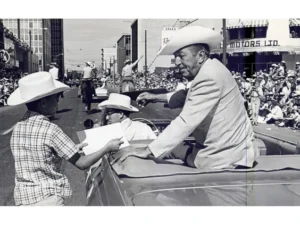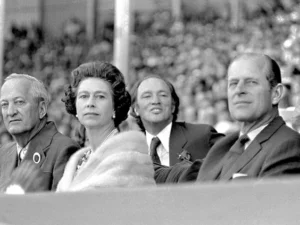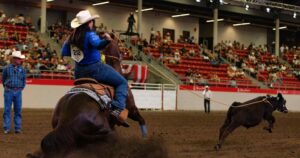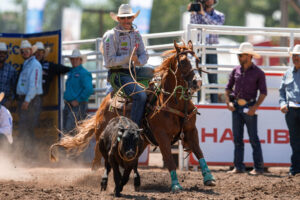written by: Visit Stampede
Tom Three Persons (1888–1949) was more than a cowboy—he was a legend, a man whose life bridged two worlds and whose spirit became a beacon for generations. Born March 19, 1888, on the Blood Reserve in Alberta, Tom was the son of Ayakohtseniki (Double Talker), a proud Kainai woman, and Fred Pace, a white trader who vanished before Tom’s birth. But it was the Kainai Nation that shaped him, especially after his mother married Three Persons, a young widower who became Tom’s adoptive father and namesake.
From his earliest days, Tom was drawn to the land and to horses. He learned the ways of the hunt, the rhythms of ranching, and the art of horsemanship from his uncle, skills that would define his life. Yet his path was not easy. After enduring three years in a residential school, he returned home to care for the cattle herd he inherited after his stepfather’s death. But fate struck hard: the winter of 1906–1907, one of the harshest Alberta had ever seen, wiped out nearly his entire herd.
Undeterred, Tom took a job as a cowboy for the fall roundup. His roping and riding skills were unmatched, and those who saw him work knew he was destined for something extraordinary. Encouraged by friends and colleagues, Tom set his sights on the rodeo—a decision that would change his life and the history of Western sports.
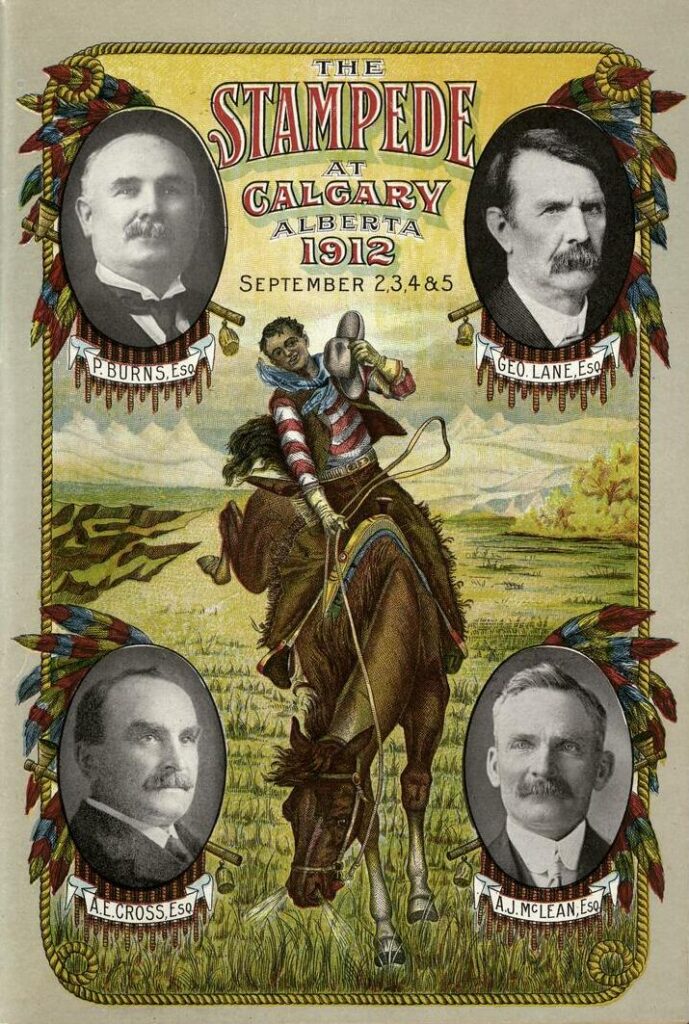
The 1912 Calgary Stampede
In 1912, the first Calgary Stampede brought together the best cowboys in North America. The saddle bronc event was the ultimate test of courage and skill, and Tom faced the most feared horse of all—Cyclone, a bronco that had thrown every rider before him. The crowd held its breath as Tom mounted Cyclone, and for what felt like an eternity, man and beast battled. Unlike today’s rodeo, there was no eight-second rule; riders had to stay on until the horse stopped bucking. According to legend, Tom rode Cyclone for a staggering ten minutes, until the mighty horse finally gave in and stood still—a feat that left the crowd in awe and cemented Tom’s place in history.

The Prize
For his first-place victory in the saddle bronc competition, Tom Three Persons won:
- $1,000 cash prize (approx $26,000 today)
- A gold belt buckle – an iconic trophy in rodeo culture
- A saddle
His triumph meant more than prizes: it shattered barriers for Indigenous athletes and proved that First Nations cowboys belonged at the highest level of rodeo.
How was the Rodeo Different in 1912?
The Calgary Stampede saddle bronc competition in 1912 was much different from today’s version:
- No 8-second rule – Riders had to stay on until the horse stopped bucking.
- No scoring system – The winner was determined by endurance and control, rather than a point-based system.
- More unpredictable horses – Broncs like Cyclone were famous for their difficulty, making the competition even more challenging.
The Fight for Indigenous Inclusion in 1912
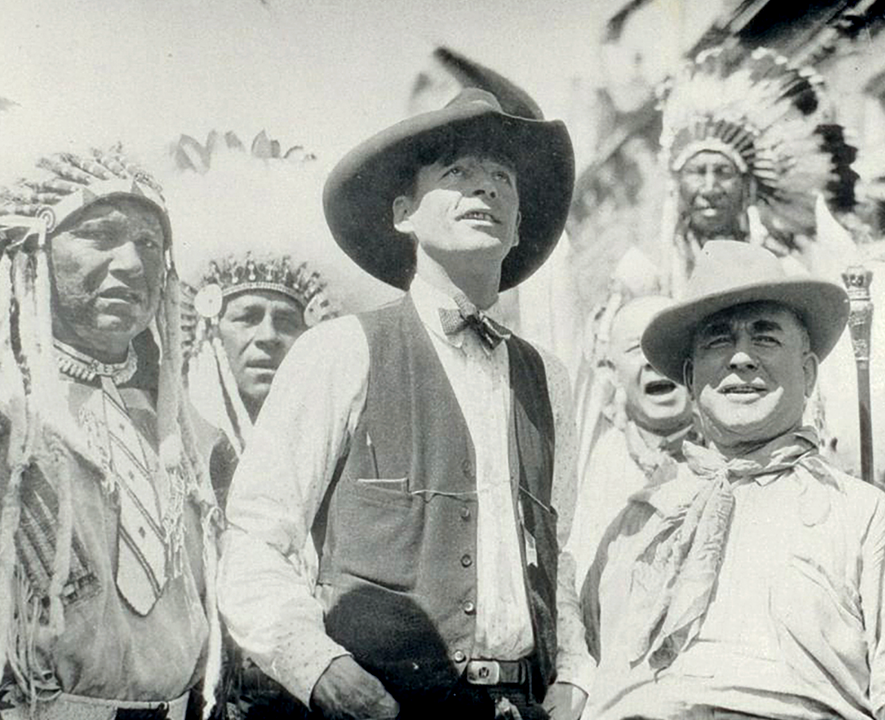
When Guy Weadick, an American rodeo promoter, envisioned the first Calgary Stampede in 1912, he imagined a grand celebration of frontier life that would showcase not only cowboy culture but also the rich traditions of the region’s First Nations peoples. However, realizing this vision was far from straightforward. At the time, the federal government’s Indian Act imposed severe restrictions, making it illegal for Indigenous people to leave their reserves without a permit and outlawing the public expression of their cultures. Weadick’s determination to include First Nations participation met with official resistance, as government officials and Indian Agents were wary of allowing such a visible Indigenous presence at a major public event.
Undeterred, Weadick leveraged his political connections—reaching out to influential figures such as Senator James Alexander Lougheed and future Prime Minister R.B. Bennett—to pressure the government for an exemption. His persistence paid off: not only were members of the Treaty 7 Nations allowed to attend, but some 1,800 First Nations people ultimately led the Stampede parade, camped along the Elbow River, and competed in the rodeo. This act of defiance and inclusion was a rare moment of celebration in a period marked by assimilationist policies, and it helped ensure that Indigenous culture remained a vibrant and visible part of the Stampede’s identity for generations to come.
Weadick’s efforts were more than just a gesture of respect—they were a bold challenge to the restrictive laws of the time, and a testament to the resilience and importance of Indigenous communities in shaping the spirit of the Stampede
What Did Tom Three Persons Do After the Calgary Stampede?
Tom never competed at the Stampede again, but his legend only grew. He became one of Alberta’s most successful ranchers, raising cattle and horses on the Blood Reserve and leaving an estate worth tens of thousands of dollars. Even as injuries and hardships shadowed him later in life, his spirit never wavered.
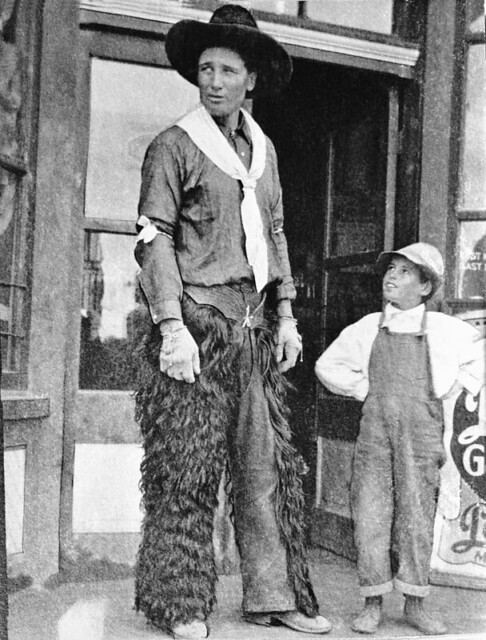
Tom Three Persons’ Lasting Legacy
Today, Tom Three Persons is celebrated as:
The first Indigenous winner of the Calgary Stampede saddle bronc competition
The first Canadian to win at the Calgary Stampede
A rodeo legend whose ride remains one of the most remarkable feats in rodeo history
An inspiration for Indigenous cowboys in Western sports
Tom Three Persons was not just a cowboy—he was a hero, a trailblazer, and a true Canadian Western icon. His story reminds us that greatness can rise from adversity, and that legends are born not just from what we achieve, but from the hearts we touch along the way.


